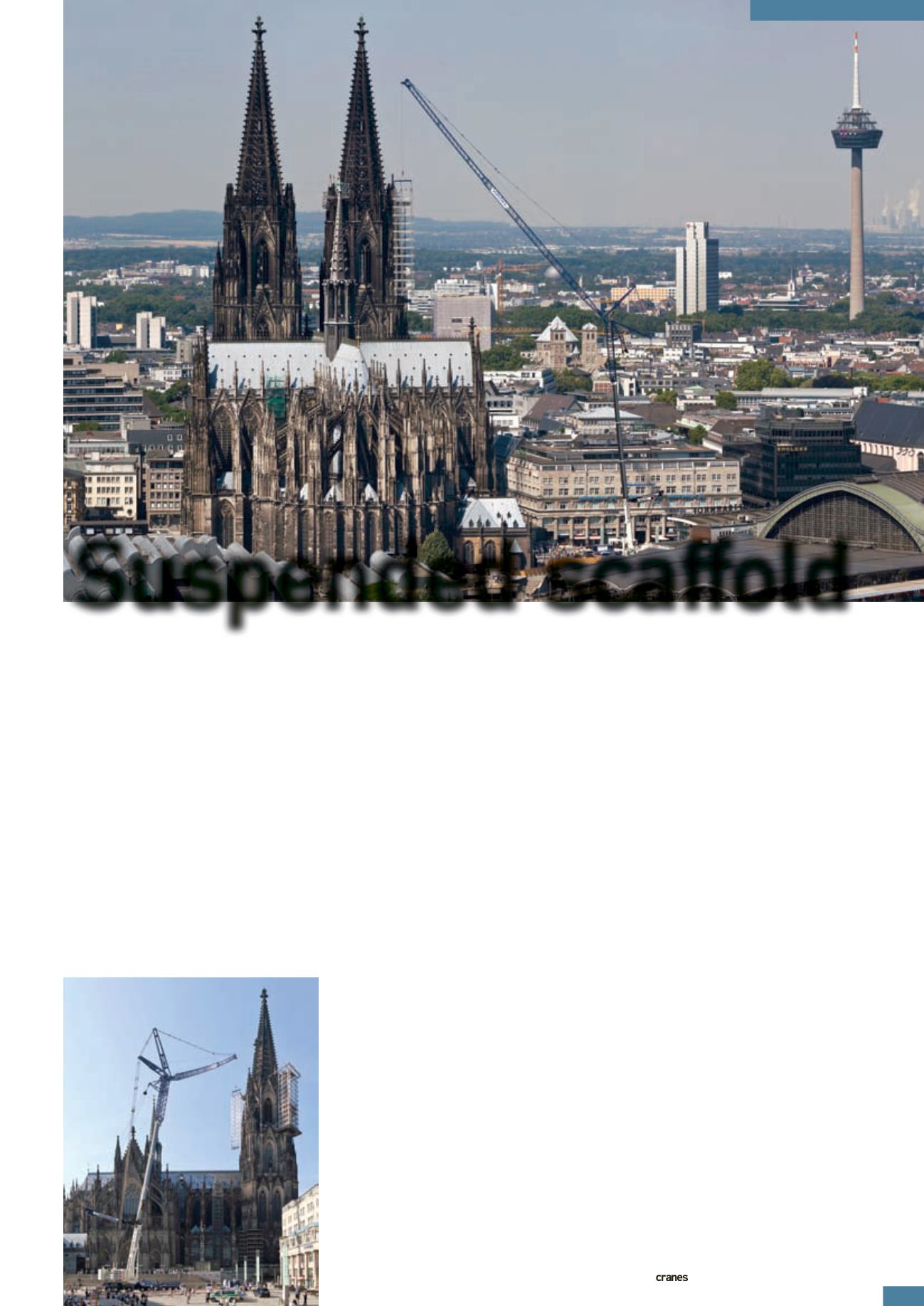
41
INTERNATIONAL AND SPECIALIZED TRANSPORT
■
DECEMBER 20
13
Specialist lifting contractor Wasel in Germany helped to carefully dismantle a hanging
scaffold structure from the ancient Cologne Cathedral in Germany.
IC
reports
on with regard to the erection site for
the crane. The first area of choice was a
position on the pedestrian side on the south
side of the cathedral. This area, however,
was dismissed as a set up site because
the engineering records of the area had
been lost when the Cologne City Archive
collapsed in 2009. It was impossible to
make correct engineering calculations to
erect the crane.
After discussions with the cathedral
administration department and with local
authorities and institutions in the city, the
crane was eventually erected on the station
forecourt at Cologne Central Station.
The site posed several challenges, as
Jürgen Oprée, technical manager at Wasel,
explains, “In the run-up to this job, the
assembly gave us some headaches. We had
to consider station evacuation plans in
our assembly schedules and also had to
keep the escape and rescue routes free at
all times.”
Around 280,000 passengers use Cologne
Central Station every day. A result of
this meant that the crane crew were only
permitted to block certain areas of the
station forecourt needed to assemble the
boom only at night.
Further difficulties presented to Wasel
H
eavy lift company Wasel from
Bergheim in Germany overcame
several challenges to dismantle two
hanging scaffold structures from the north
tower of Cologne Cathedral. One of the
scaffold structures was at a height of
100 metres.
To carry out the tasks, Wasel used a
750 tonne capacity Liebherr LTM 1750-9.1
wheeled mobile telescopic crane configured
with a maximum hook height of 154 m.
One of the aluminium scaffold structures
had to be removed in three sections.
Challenges for the project began early
SITE REPORT
during the project included a small
assembly site of 90 m. This meant the
boom had to be assembled in a suspended
position. It took eight hours to configure
the basic crane with supports, telescopic
boom guys and a telescopic boom
extension, including pivot section.
Part of the job for the team involved
separating the sections of scaffold. Once the
sections were separated the LTM 1750-9.1
was able to lift the scaffold off the cathedral.
The sections measured 7 m wide and
33 m tall. The scaffold sections were then
lifted between the cathedral towers and
positioned in front of the main entrance
of the cathedral. A Liebherr LTM 1070-
4.2 helped with the final positioning of
the sections. Jürgen Oprée explained the
difficulties encountered during the process,
“When we were threading the rear
scaffold out, in some cases we had just
15 centimetres between the load and
the cathedral.
“Just a few years ago a job like this
wouldn’t have been possible in this
manner,” explained Oprée, “from a
technical aspect, maybe, but certainly
not within the short time frame.
In total the task took four hours
to complete.
■
Suspended scaffold
The team separate
the sections of
scaffolding so it can
be lifted off
the cathedral
The first scaffold section is
suspended from the hook of the
LTM 1750-9.1


